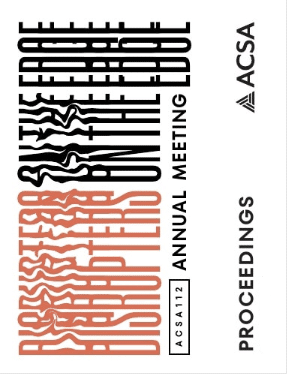Author(s): Mitchell Hubbell
Adapting Boundaries reimagines strip mall sites as opportunities for affordable housing infill and develops a residential building typology adapting to the rear of these sites. Additionally, the project addresses low residential lot availability in North America, focusing on Los Angeles, California as a case study. A lack of residential lot availability has caused Los Angeles researchers, including Dana Cuff, to challenge designers in pursuing more innovative housing typologies that address this issue.1 California’s “Middle-Class Housing Act,” Senate Bill 6 and Assembly Bill 2011, makes this challenge more feasible, allowing housing on sites previously zoned for commercial use and providing a framework for design. Adapting Boundaries focuses on the city’s ubiquitous strip mall inventory and the recurrent boundary condition between the rear faces of strip malls and the neighborhoods behind. The project questions how the boundary between residential and commercial zones can be altered, promotes low-rise, high-density housing, and encourages neighborhood connectivity [1].
https://doi.org/10.35483/ACSA.AM.112.13
Volume Editors
Germane Barnes & Blair Satterfield
ISBN
978-1-944214-45-6

 Study Architecture
Study Architecture  ProPEL
ProPEL 
